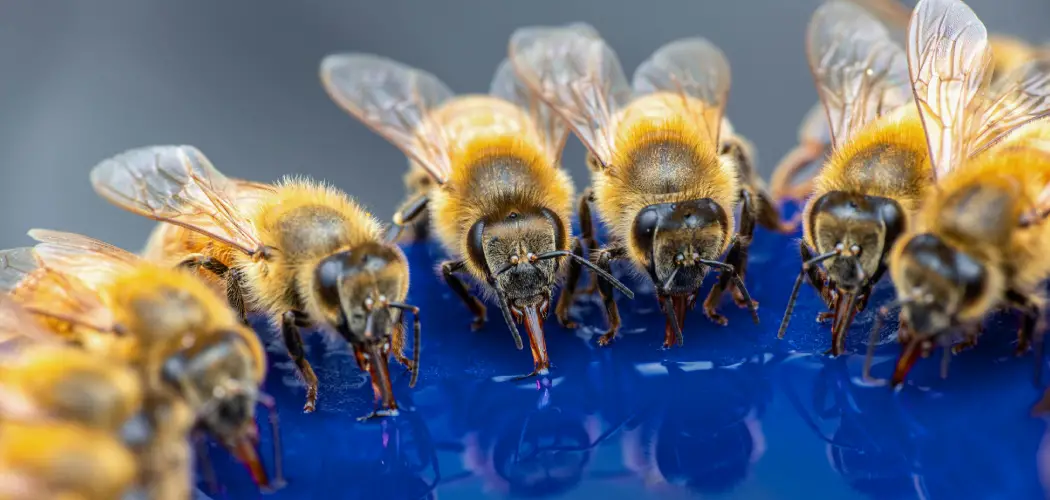Beekeeping is an ancient practice that marries the art of nurturing bees with the science of agriculture and biology. At its heart lies the quintessential skill of understanding how to calm bees, a critical factor in maintaining a harmonious relationship between bees and beekeepers. This introductory section sheds light on the pivotal role that calm bee behavior plays in successful beekeeping practices.
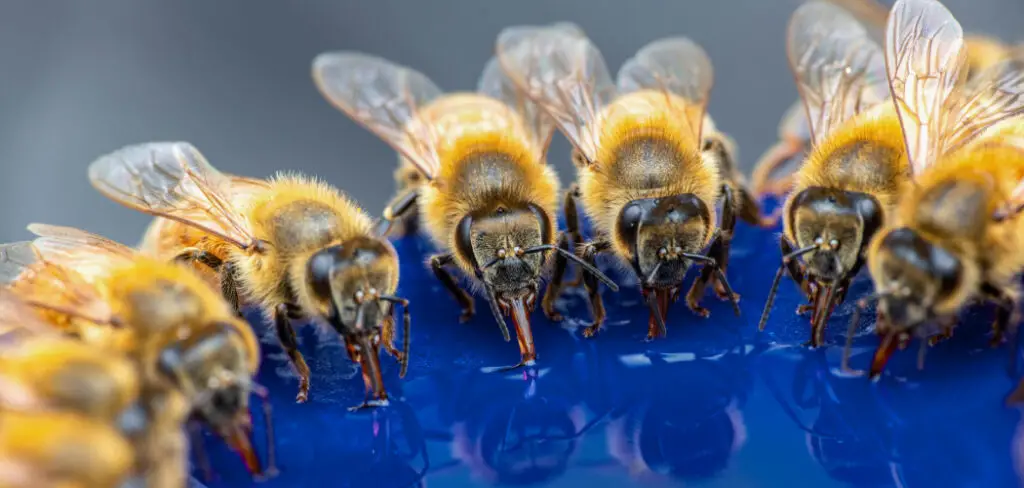
It emphasizes that a serene hive is pivotal not just for the safety of the beekeeper but also for the health and productivity of the bee colony. Throughout this guide, we will explore a range of techniques and strategies designed to calm bees safely and effectively.
From understanding bee behavior and environmental factors that influence their mood to employing natural calming methods and proper beekeeper equipment, this comprehensive guide aims to equip beekeepers with the knowledge needed to achieve a peaceful coexistence with their bees, ensuring the well-being of the hive and its inhabitants.
Understanding Bee Behavior
To adeptly manage a hive and master how to calm bees, one must first understand these fascinating insects’ intricate social structure and communication methods, along with the various environmental factors that can influence their behavior.
A. Social Structure: Overview of Bee Colony Organization and Hierarchy
A deep appreciation for the bee colony’s complex social structure is at the core of beekeeping. A typical colony consists of a single queen bee, hundreds to thousands of male drones, and tens of thousands of female worker bees.
The queen’s primary role is reproduction, laying up to thousands of eggs daily. On the other hand, drones live solely to mate with a queen, and the workers perform the myriad tasks necessary for colony survival, from foraging for nectar and pollen to caring for the young and defending the hive. This hierarchy and division of labor are essential for the colony’s efficiency and survival, affecting every aspect of hive life.
B. Communication Signals: Understanding Bee Communication through Pheromones and Dance Language
Communication within the hive is sophisticated, relying heavily on pheromones and the famous “dance language.” Pheromones are chemicals secreted by bees to communicate various messages, from marking out routes to food sources to signaling distress.
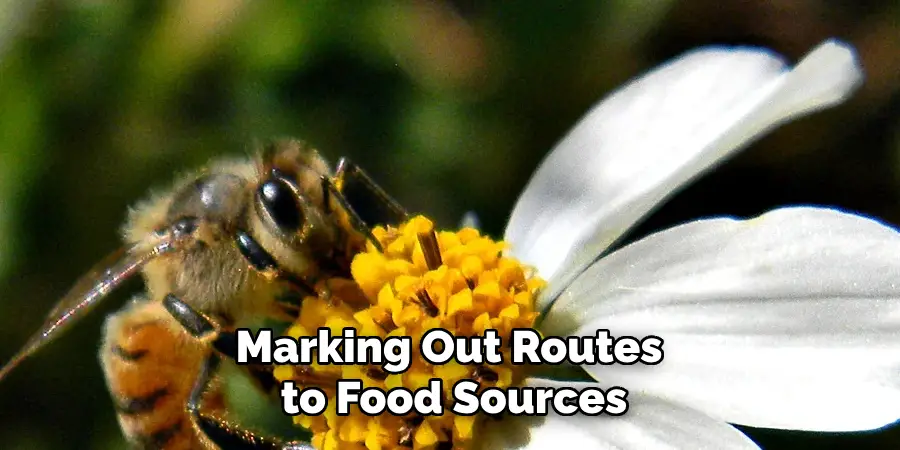
The dance language, particularly the ‘waggle dance,’ is a method by which forager bees communicate the direction and distance of food sources to their hive mates. Understanding these communication methods is crucial for beekeepers, especially in practices aimed at calming bees or managing hive activities.
C. Environmental Factors: Factors Influencing Bee Behavior, Such as Weather, Season, and Hive Conditions
Environmental factors play a significant role in the behavior of bees. Weather conditions, for instance, can greatly influence their mood and productivity; bees tend to be more aggressive and less active in cold and rainy weather. Similarly, the season affects the availability of food sources, impacting the colony’s overall stress levels.
Additionally, the internal conditions of the hive, such as overcrowding or inadequate ventilation, can lead to increased agitation among the colony’s members. A beekeeper’s ability to manipulate these conditions, enhancing the comfort and well-being of the hive, is paramount in maintaining calmness and preventing distress within the colony.
How to Calm Bees: Proper Hive Management
A. Hive Placement: Choosing the Right Location for Beehives to Minimize Disturbance and Maximize Productivity
Proper hive placement is foundational in beekeeping, as it significantly influences the bees’ productivity and their interaction with the beekeeper. The ideal location for beehives is an area that receives ample morning sunlight yet is shielded from the intense heat of the afternoon.
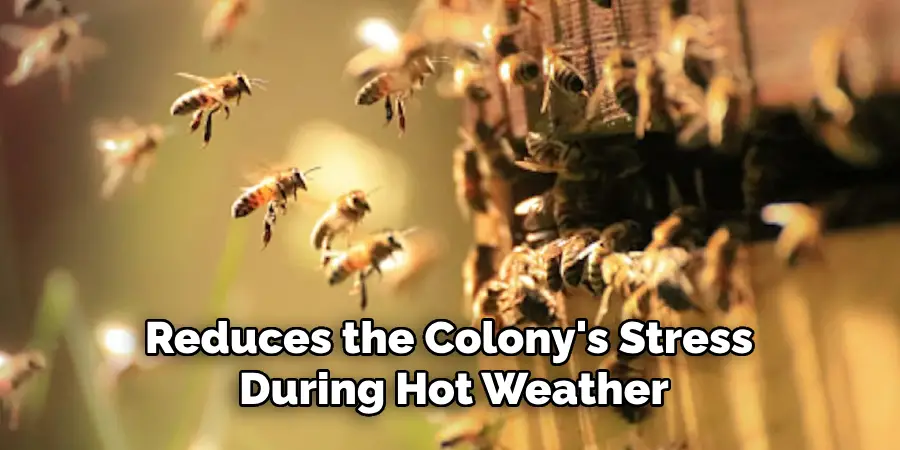
This encourages early foraging and reduces the colony’s stress during hot weather. Accessibility to clean water sources and abundant forage within a reasonable distance is also critical. Hives should be positioned away from high-traffic areas to minimize disturbance from humans or livestock yet remain accessible for the beekeeper’s regular inspections and maintenance.
Consideration of wind patterns is essential, too; hives should be placed to avoid prevailing winds, which can chill the bees, particularly during colder months. Ensuring that the hives are not situated in low-lying areas will help prevent dampness and potential flooding, thereby fostering a stable and productive environment for the bees.
B. Hive Inspection Techniques: Gentle Approaches to Hive Inspection to Avoid Disturbing Bees
Hive inspections are crucial for assessing the health and well-being of the colony but must be carried out with care to avoid unnecessary disturbance. Approaching hives gently and calmly, preferably during the warmest part of the day when many bees are foraging, minimizes the number of bees disturbed.
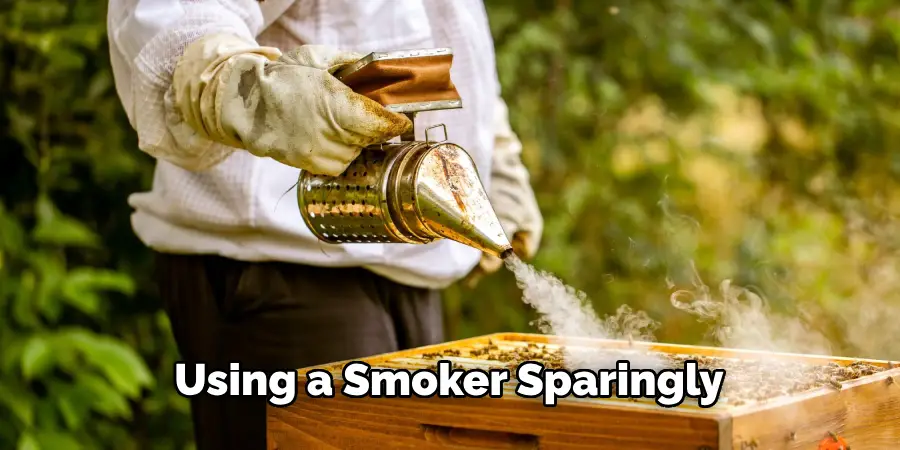
Using a smoker sparingly can help calm bees, making them less likely to become defensive. When opening the hive, slow and deliberate movements are paramount; abrupt motions can alarm the bees. Inspecting frames one at a time and ensuring they are securely held will prevent accidents, such as dropping them, which can agitate or harm the bees.
The goal is to complete the inspection efficiently, without rushing, to minimize the time the hive is open and exposed.
C. Maintaining Hive Health: Regular Maintenance Practices to Ensure Hive Health and Stability
The health of a bee colony hinges on diligent maintenance practices. Regular checks for signs of disease, such as unusual brood patterns or the presence of pests like Varroa mites, are essential. Implementing integrated pest management strategies can mitigate these threats while minimizing chemical use within the hive.
Ensuring the hive’s physical condition is another critical aspect; broken components should be repaired or replaced promptly to keep the hive secure. Monitoring food stores, especially towards the end of summer and early spring, is crucial to prevent starvation. Supplemental feeding with sugar syrup or pollen patties may be necessary during these times.
Additionally, providing adequate ventilation helps maintain an optimal hive environment, reducing moisture and the risk of mold or mildew, which can affect bee health. Understanding and implementing these practices is key to sustaining a healthy, productive bee colony.
How to Calm Bees: Beekeeper Behavior and Equipment
A. Proper Beekeeper Attire: Importance of Wearing Protective Gear and Choosing the Right Clothing for Beekeeping
The safety and comfort of the beekeeper are crucial during hive inspections and management activities. Wearing the appropriate protective gear is paramount to prevent bee stings and ensure a smooth interaction with the hive. A beekeeping suit should cover the entire body and be made of a light-colored, smooth material that discourages bees from stinging.
It often includes a veil to protect the face and neck, gloves to shield the hands, and sometimes boots that can be secured over the suit’s legs. The veil is particularly important as it protects the most vulnerable areas without obstructing vision.

Gloves should be tight enough to allow delicate movements yet thick enough to prevent stings. Choosing the right clothing protects the beekeeper and minimizes disruption within the hive, as bees are less likely to feel threatened by someone fully covered and moving confidently and calmly.
B. Slow and Steady Approach: Techniques for Slow and Gentle Movements to Prevent Agitation in Bees
A calm and measured approach to beekeeping tasks is essential for maintaining harmony within the hive. Bees are highly sensitive to rapid movements or vibrations, which can be perceived as a threat, triggering defensive behavior.
Beekeepers should practice slow, deliberate motions when inspecting hives, removing frames, or performing any hive maintenance. This involves avoiding quick, jerky actions and maintaining a steady hand while working with the bees and their environment.
When bees sense slow movements, they are less likely to feel disturbed or threatened, allowing beekeepers to carry out their work with minimal interference from the colony. This technique reduces stress for the bees and the beekeeper, creating a safer and more productive beekeeping experience.
C. Smoker Usage: Proper Use of Smokers to Calm Bees and Reduce Defensive Behavior
The smoker is an indispensable tool in beekeeping, used to produce a gentle, cooling smoke that calms bees and reduces their tendency to become defensive. Smoke masks alarm pheromones released by guard bees, temporarily disorienting the colony and making it easier for the beekeeper to conduct inspections or harvest honey without inciting aggression.

However, it’s crucial to use the smoker judiciously. Too much smoke can overstimulate or harm the bees, while too little may not be effective. The key is to puff a few gentle smokes at the hive entrance before opening the hive and then lightly across the frames once opened.
This method ensures that the bees are calmed with minimal stress, making the hive management activities safer for both bees and beekeepers. Proper smoker usage, the right attire, and a slow and steady approach significantly contribute to successful and sustainable beekeeping.
Communication with Bees
A. Pheromone Signals: Utilizing Bee Pheromones to Signal Calmness and Reduce Agitation
Pheromones play a crucial role in communication within a bee colony, serving as an invisible language that dictates behavior, organizes social activities, and maintains order. Beekeepers can utilize synthetic pheromones or manage the hive in such a way as to mimic natural bee pheromones to promote calmness and reduce agitation during hive inspections and management.
Calming pheromones, similar to those released by the queen or produced during nectar foraging, can help mask alarm signals released by guard bees, thus keeping the colony more serene. Understanding bees’ complex pheromonal communication system allows beekeepers to work harmoniously alongside them, ensuring that their actions do not inadvertently trigger stress or defensive responses.
B. Gentle Handling Techniques: Handling Bees with Care and Respect to Minimize Stress
Handling bees with care and respect fundamentally shapes the relationship between beekeepers and their bees. Gentle handling techniques involve smooth, considered movements and actions that avoid crushing or alarming bees.
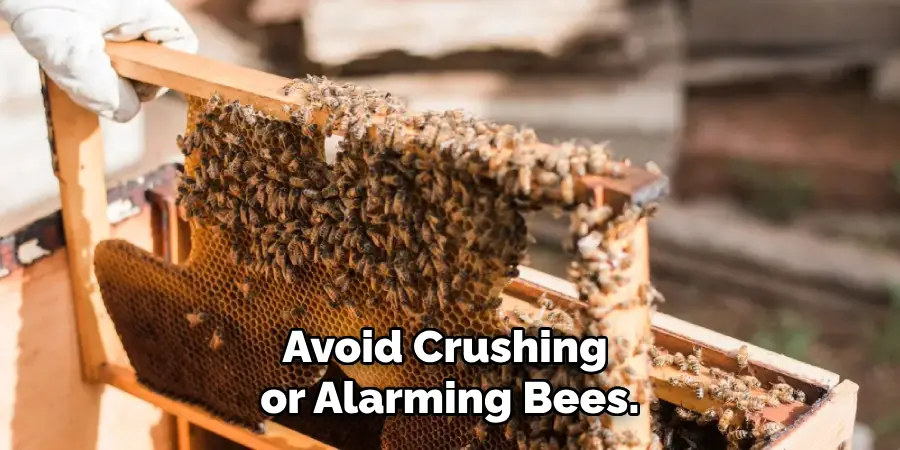
Using tools like soft brushes to gently coax bees away from areas where work is needed or carefully lifting frames to inspect without jerky movements reduces stress levels in the colony. Beekeepers who prioritize the well-being of their bees often find their colonies healthier, more productive, and less prone to aggressive behaviors.
The emphasis on gentleness and respect towards the bees benefits the colony’s overall health and enriches the beekeeping experience with a deeper appreciation and understanding of bee behaviors and needs.
C. Listening to Bee Buzz: Understanding Bee Sounds as Indicators of Hive Health and Emotions
The hum of a bee colony is not just background noise; it’s a symphony of sounds that can convey vital information about the health and emotional state of the hive. Beekeepers who develop an ear for these sounds can detect buzz pitch and intensity changes that might indicate stress, queenlessness, or impending swarming.
By listening attentively, beekeepers can take preemptive actions to address issues within the hive, such as introducing a new queen or managing hive space to prevent swarming. Learning to interpret the buzz of bees enhances the beekeeper’s ability to communicate with and understand their colony, further aligning beekeeping practices with the natural rhythms and needs of the hive.
Natural Calming Methods
A. Using Herbs and Plants: Incorporating Natural Herbs and Plants Known to Calm Bees into Beekeeping Practices
Integrating herbs and plants with calming properties into the environment surrounding beehives can significantly contribute to maintaining a peaceful colony. Lavender, chamomile, and lemon balm, for instance, are attractive to bees due to their nectar and have natural calming effects on the colony.
Planting these around the apiary can have a dual benefit; they provide essential nutrients through their nectar and pollen, and their scent helps soothe the bees. Such practices are a step toward more holistic beekeeping, where the beekeeper uses bees’ natural preferences and behaviors to manage the hive more effectively and gently.
B. Providing Adequate Forage: Ensuring Bees Have Access to Abundant Nectar and Pollen Sources to Maintain Calmness
Stress in a bee colony can often be attributed to insufficient access to nectar and pollen, which are vital for the hive’s survival and well-being. By planting a diverse range of flowering plants that bloom at different times of the year, beekeepers can ensure that their bees have continuous access to food.
This abundance of forage keeps the colony well-fed and reduces competition and stress, leading to a more harmonious hive. Beekeepers can further support their bees by choosing plants and flowers known to be particularly favored by bees, thereby enhancing the efficiency and satisfaction of their foraging efforts.
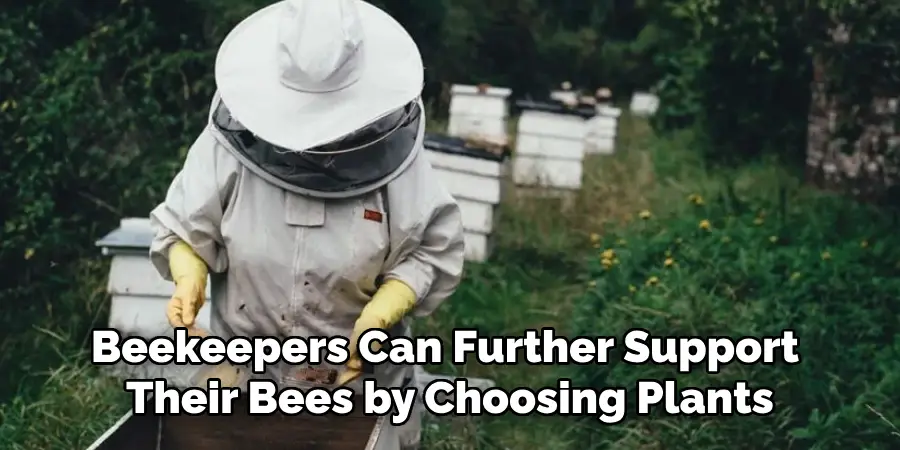
C. Hive Design Considerations: Designing Hives with Proper Ventilation and Space to Reduce Congestion and Aggression
Optimizing hive design is crucial for maintaining a calm and productive colony. Proper ventilation helps regulate the hive’s internal temperature, preventing overheating and the associated agitation. Additionally, ensuring there is enough space within the hive can reduce congestion, making bees less likely to become stressed and aggressive.
This can involve regularly checking for and managing potential overcrowding, adding supers or frames when needed, and designing entrances that facilitate easy access to and from the hive. Considering these factors when planning and maintaining bee habitats can significantly influence the overall health and temperament of the bee colony, leading to more successful beekeeping endeavors.
Managing Swarm Behavior
A. Swarm Prevention Techniques: Strategies for Preventing Swarming Through Hive Management and Queen Suppression
Preventing swarming is paramount in beekeeping, as it allows for maintaining strong, productive colonies. Effective strategies include regular hive inspections to check for signs of overcrowding and queen cell formation indicative of an impending swarm.
Hive management techniques such as adding space with new boxes or frames can give bees enough room to grow without feeling cramped, helping to mitigate swarming impulses.
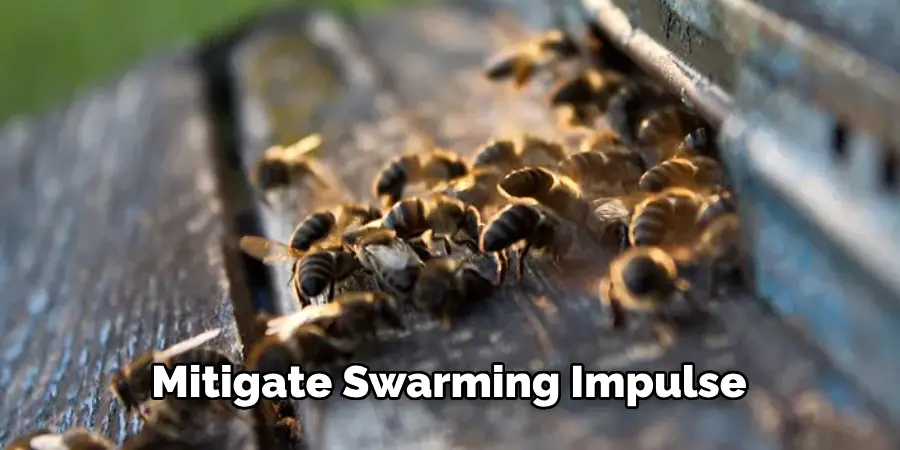
Additionally, queen suppression methods, like replacing an older queen with a younger one, can reduce the colony’s desire to swarm, as younger queens are often more prolific and can help keep the colony cohesive and focused on hive activities.
B. Swarm Capture: Safe and Effective Methods for Capturing and Relocating Swarms
Capturing swarms is critical for beekeepers to safely relocate bees to a new hive and prevent loss. The use of bait hives, placed at strategic locations, can attract swarms by mimicking ideal nesting sites. When capturing a swarm, gentle methods must be employed to ensure minimal stress and harm to the bees.
This often involves using a bee brush or gently shaking the swarm into a prepared box, then securing and transporting them to their new location. Protective gear and calm, measured actions are essential to ensure the safety of both beekeepers and bees during the process.
C. Swarm Reintegration: Techniques for Reintroducing Swarmed Bees into the Hive to Minimize Disruption
Once a swarm has been captured, reintegration into a hive—whether an existing colony or a new setup—is a delicate process that requires strategic planning. Quarantine measures may be necessary initially to ensure the health and compatibility of the swarm with its new environment.
Gradual introduction techniques, such as combining the swarm with a weak colony using a double screen to allow for scent mingling without immediate contact, can help to ensure a smooth transition. Additionally, carefully monitoring the reintegrated swarm is crucial to promptly address any signs of rejection or aggression, thereby minimizing disruption and maximizing the chances of successful incorporation into their new hive.
Emergency Response and Safety Measures
A. Handling Aggressive Bees: Protocols for Dealing with Aggressive or Defensive Bee Behavior
Dealing with aggressive bee behavior requires calm and measured actions to ensure the safety of both the beekeeper and the bees. Wearing protective gear, including a veil, gloves, and suit, is always essential to minimize the risk of stings. When faced with aggression, moving slowly and deliberately, avoiding fast movements that could further provoke the bees, is recommended. Utilizing smoke gently can also help calm the bees, making them less likely to become defensive.
B. Emergency Situations: Steps to Take in Case of Bee Sting Allergies or Beekeeping Accidents
In the event of a bee sting, removing the stinger as quickly as possible is critical to reduce the amount of venom injected. For those with bee sting allergies, carrying an epinephrine auto-injector (EpiPen) is paramount, and using it promptly after being stung can be lifesaving.
In all cases of bee stings, monitoring for signs of an allergic reaction, such as difficulty breathing or swelling of the throat, is crucial. Immediate medical help should be sought if an allergic reaction is suspected. Furthermore, beekeepers should have a first aid kit readily available to address minor injuries promptly.
C. Importance of Training: Proper Training and Education for Beekeepers to Handle Emergency Situations Effectively
Investing in proper training and education is indispensable for beekeepers to manage emergency situations effectively and safely. Participating in beekeeping courses, workshops, and seminars can equip beekeepers with the knowledge needed to respond to aggressive bee behavior, treat bee stings, and execute emergency protocols efficiently.
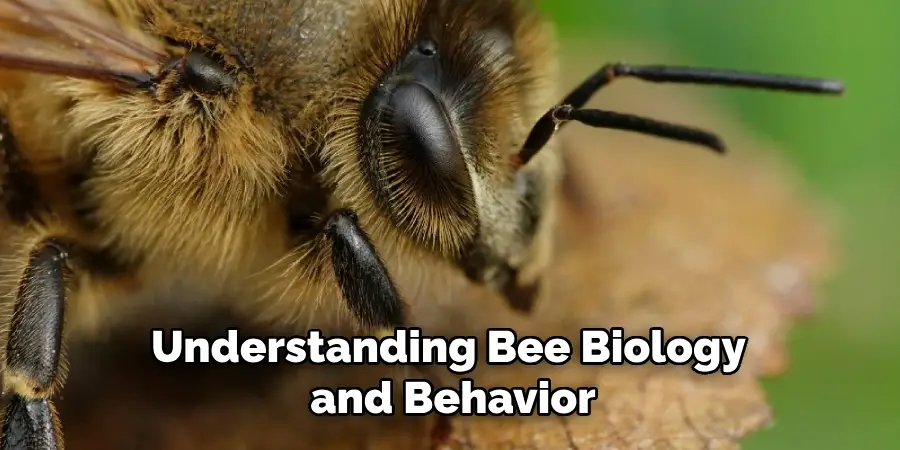
Understanding bee biology and behavior is fundamental to preventing accidents and ensuring the welfare of both the beekeeper and the bee population. Regular practice and refreshers on emergency procedures ensure preparedness when faced with unexpected situations.
Conclusion
We’ve explored various methods and practices throughout this guide to maintain bee health and minimize stressors that may lead to aggressive behavior. Each strategy creates a calm and productive environment for bees, from preventing overheating and overcrowding within the hive to managing swarm behavior and dealing with emergencies.
Central to all these practices is the importance of gentle handling, understanding bee communication signals, and making environmental adjustments that prioritize bee well-being.
Implementing techniques on how to calm bees not only ensures the safety of beekeepers but also supports the health and prosperity of the bee colony.
We encourage you to apply these strategies and share your experiences with the beekeeping community. Your commitment to learning and adapting your practices plays a crucial role in the success of your beekeeping endeavors. Here’s to a fruitful and harmonious relationship with your bees, filled with mutual respect and understanding. Happy Beekeeping!
You Can Check It Out to Reduce Smoke in Your Fire Pit

